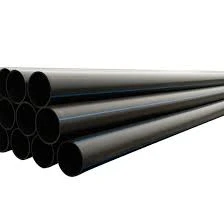Okt . 13, 2024 00:36 Back to list
hdpe drainge pipe
The Importance of HDPE Drainage Pipes in Modern Infrastructure
High-Density Polyethylene (HDPE) drainage pipes have emerged as a crucial component in modern infrastructure due to their superior properties and versatility. As urban areas expand and the demand for efficient drainage systems increases, HDPE pipes are becoming the preferred choice for residential, commercial, and industrial applications. This article will explore the benefits, applications, and environmental impacts of HDPE drainage pipes.
Advantages of HDPE Pipes
One of the primary advantages of HDPE drainage pipes is their outstanding durability. Made from high-density polyethylene, these pipes are resistant to corrosion, chemicals, and harsh environmental conditions, which significantly extends their lifespan compared to traditional materials like concrete and metal. HDPE pipes can withstand a wide range of temperatures, making them suitable for various climates.
Another significant benefit is their flexibility. HDPE pipes can be bent and curved without breaking, allowing for easier installation, especially in complex drain layouts. This flexibility also helps in adapting to the ground movement, minimizing the risk of damage compared to rigid pipes.
Additionally, HDPE pipes are lightweight, which makes transportation and handling easier. This reduced weight allows for quicker installation, ultimately saving labor costs and time on construction projects. The smooth interior surface of HDPE pipes also ensures efficient fluid flow with minimal friction loss, enhancing the overall performance of the drainage system.
Applications of HDPE Drainage Pipes
HDPE drainage pipes are widely used in various applications. In residential settings, they are commonly employed for stormwater management, septic systems, and irrigation. Their ability to handle large volumes of water efficiently makes them ideal for preventing flooding and managing runoff in urban areas.
hdpe drainge pipe

In commercial and industrial applications, HDPE pipes are used for wastewater management, chemical drainage, and numerous other purposes where durability and chemical resistance are paramount. Their versatility allows them to be used in both underground and above-ground installations, providing flexibility in design and execution.
Moreover, HDPE pipes are increasingly popular in agricultural applications. They are used for drainage systems that help manage excess water in fields, thus improving crop yield and preserving soil quality.
Environmental Considerations
The use of HDPE drainage pipes also has environmental benefits. Since they are made from recyclable materials, they contribute to a more sustainable construction practice. The longevity of HDPE pipes means less frequent replacements, reducing the overall material needed over time.
Furthermore, the reduction in leakage and infiltration associated with HDPE drainage systems prevents groundwater contamination, which is crucial for preserving local ecosystems. By efficiently managing stormwater and reducing pollution, these pipes contribute positively to environmental conservation efforts.
Conclusion
In conclusion, HDPE drainage pipes represent a significant advancement in drainage technology. Their durability, flexibility, and lightweight nature make them an ideal choice for various applications ranging from residential to industrial. As urbanization continues to rise, the demand for effective drainage solutions will grow, and HDPE pipes will play a vital role in meeting this need. Their environmental benefits further enhance their appeal, aligning with the global push for sustainable infrastructure. Embracing HDPE drainage technology today is an investment in a more efficient and environmentally friendly tomorrow.
-
Premium PVC Soft Sheets: Clear, Flexible & Durable
NewsAug.12,2025
-
Premium PVC Round Rods: Durable, Chemical Resistant, Easy to Machine
NewsAug.11,2025
-
PP U-channel: Chemical-Resistant, Lightweight & Durable
NewsAug.10,2025
-
Transparent PVC Pipe: Clear Flexible Tubing for Fluids
NewsAug.09,2025
-
Durable PP Rigid Sheet: Versatile & High-Quality Plastic Panels
NewsAug.08,2025
-
Premium Glossy PP Rigid Sheet – Durable & Versatile
NewsAug.07,2025

